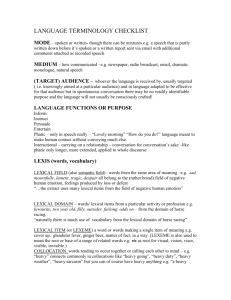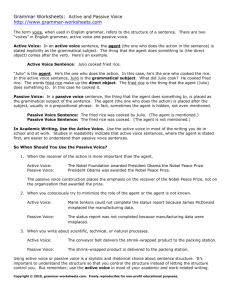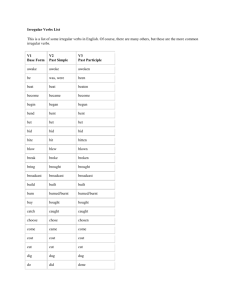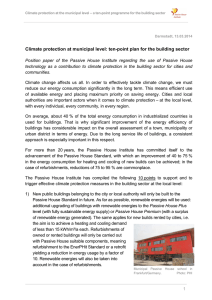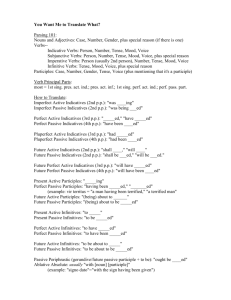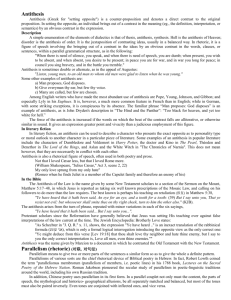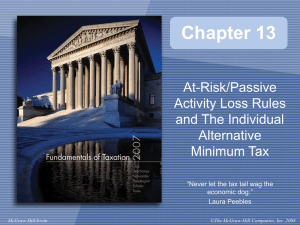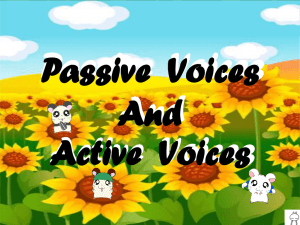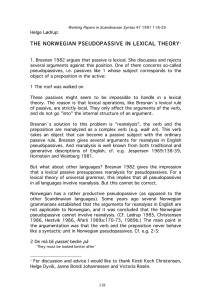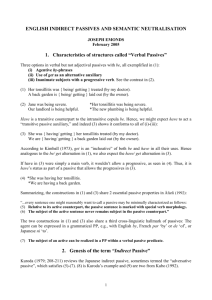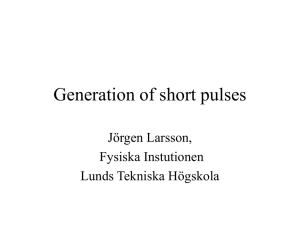Syntactic Patterning - Unit3englishlanguageAOS2
advertisement
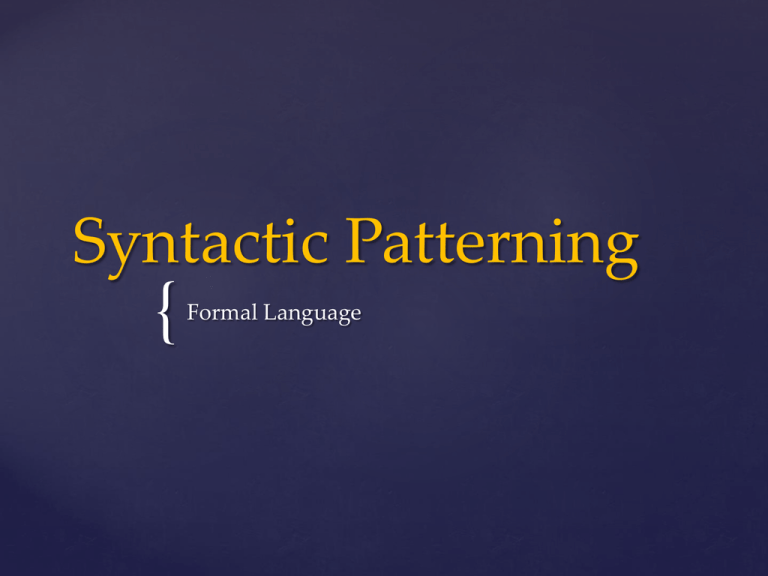
Syntactic Patterning
{
Formal Language
Coordination: Clauses are in equal status, is signalled by coordinating conjunctions.
I.e.: The words have been spoken during rising tides of prosperity and the still
waters of peace. Yet, every so often the oath is taken amidst gathering clouds and
raging storms. At these moments, America has carried on not simply because of
the skill or vision of those in high office, but because We the People have
remained faithful to the ideals of our forebears, and true to our founding
documents.
http://www.nytimes.com/2009/01/20/us/politics/20textobama.html?pagewanted=all
Subordination: One clause is subordinate to another, if it depends on it. The
dependent clause is called a subordinate clause and the independent clause is called
the main clause. Subordinate clauses are usually introduced by subordinators (=
subordinate conjunctions) such as after, because, before, if, so that, that, when, while, etc.
For example:
Although we are faced with fear and adversity, we will continue to hope.
After the long wait for freedom and equality, we will rise up and be heard.
Coordination/subordination
Passive voice verbs are used in writing much more often than in speech, and they are used in
some types of writing much more often than in others. Passives are used more in journalism
(newspapers, magazines) than in fiction (novels, stories), but most journalists and fiction
writers use far more active than passive sentences. However, passives are very common in all
types of scientific and technical writing. Scientific articles often contain more passive than
active sentences.
In a passive sentence, the subject does not perform the action in the sentence. In fact, the action
is performed on it.
Examples:
Anita was driven to the theatre.
(In this example, "Anita" is the subject of the sentence - subject of the verb "was". However, she
did not perform the action of the verb "to drive". The action was done to her; she was the
recipient of the action.)
Nowadays, kites are protected.
("kites" - passive subject, i.e., the action is being done to them)
The olives are stoned and crushed in this area.
("olives" - passive subject, i.e., the actions are being done to them)
In a passive sentence, the person or thing doing the action is usually preceded by the word
"by".
Examples:
Anita was driven to the theatre by Carla.
Nowadays, kites are protected by law.
The olives are stoned and crushed in this area by my son.
Passive Sentences
The process of turning a verb into a noun.
In relation to formal language this allows speakers to conceal
information or create a more passive tone that is rather evasive,
essentially removing themselves from the subject, and emphasising
the responsibility on the noun.
I.e. They decided too close down the school. Becomes
The decision has been made to close down the school.
Emphasis is taken off of they to decision. The decision essentially
becomes responsible
This is seen in many political speeches and government documents.
Nominalisation
Antithesis: A kind of parallelism that use opposing phrases or clauses next to
each other in order to show different ideas. Its role is to help place emphasis
or create impact on the reader.
I.e It was the best of times, it was the worst of times, it was the age of wisdom,
it was the age of foolishness.
This can be seen in political speeches and literary texts.
Parallelism and listing: Very similar to antithesis however the parallelism uses
similar sounds, words and grammatical constructions. I.e. The sun sets, The sun
rises.
This also involves the coordinated phrases or lists of words that are similar to
each other. i.e. Signed, sealed and delivered. Its effect is to help link ideas to
present information in an economical way. It is also used to convey a lot of
information in a compact way.
Antithesis, parallelism,
and listing


